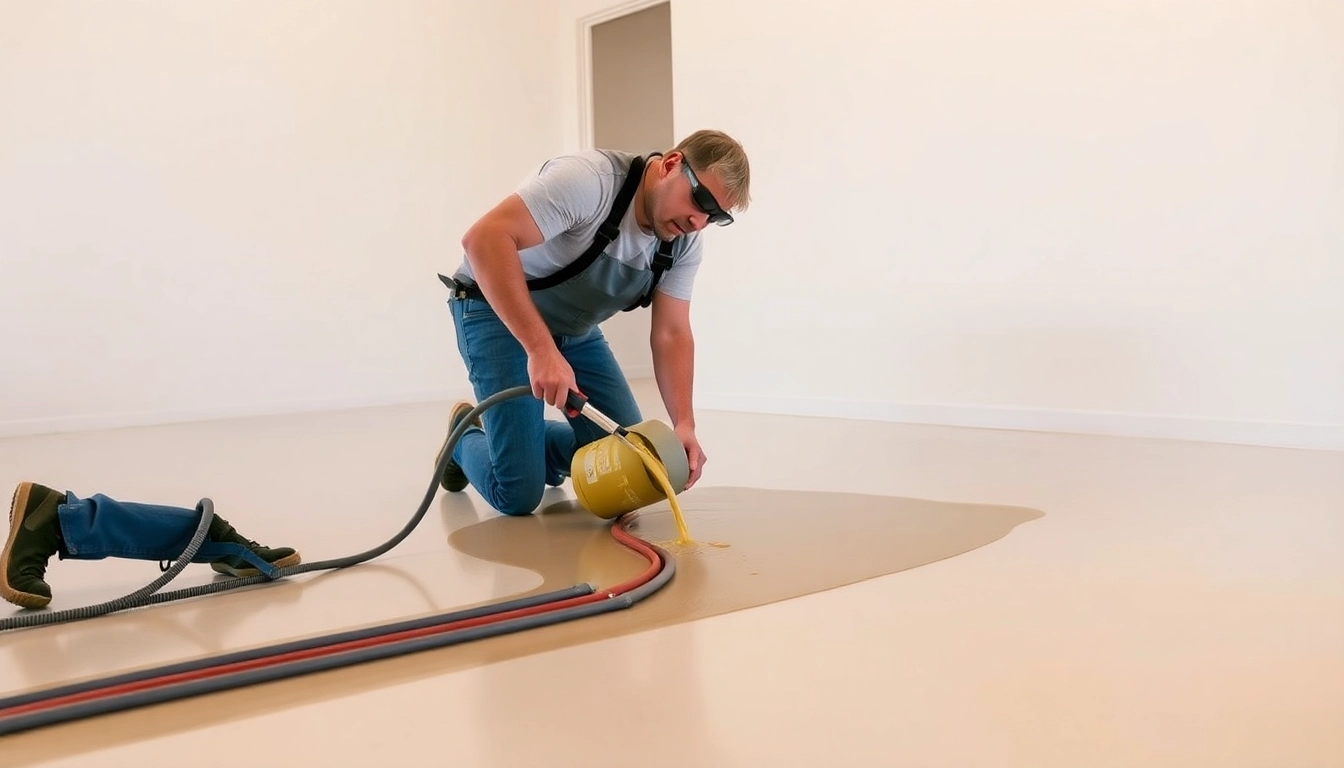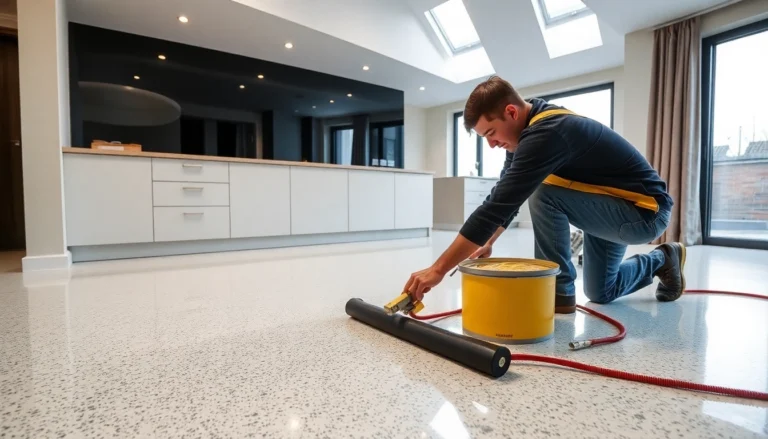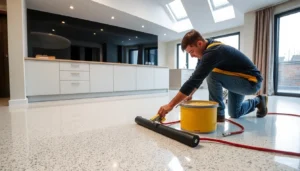Understanding Liquid Screeding and Its Benefits in Birmingham
In recent years, the construction industry in Birmingham and across the UK has seen a significant shift towards innovative flooring solutions that prioritize speed, quality, and efficiency. Among these advancements, Liquid screeding Birmingham has emerged as a preferred choice for both residential and commercial projects. This modern alternative to traditional floor finishes offers numerous advantages, from rapid installation times to superior thermal performance, making it a game-changer for flooring and underfloor heating applications in the region.
What is Liquid Screeding?
Liquid screeding is a highly fluid, pourable form of floor screed that is used to create a smooth, level base for final floor finishes such as tiles, carpets, or wood. Unlike conventional sand and cement screeds, which require extensive manual spreading and finishing, liquid screeds are pumped directly onto the prepared subfloor, flowing seamlessly to fill every nook and cranny. This advanced screed mixture typically comprises a cement-based binder, fine aggregate, and superplasticizers, ensuring remarkable workability and rapid setting times.
In Birmingham, professionals use liquid screeding primarily for its compatibility with underfloor heating systems, as it coats and encapsulates heating pipes efficiently, ensuring optimal heat transfer. This makes it particularly advantageous for homes and commercial spaces aiming for energy-efficient, evenly heated environments.
Advantages Over Traditional Floor Screeds
Choosing liquid screeding over traditional methods offers several compelling benefits:
- Speed of Installation: Liquid screeds can be poured and levelled in a matter of hours, significantly reducing project timelines. This is especially beneficial in busy commercial projects where downtime must be minimized.
- Enhanced Flatness and Level Precision: The fluid nature allows for a perfectly flat surface, reducing the need for additional levelling or grinding, which saves time and costs.
- Superior Thermal Conductivity: When used with underfloor heating, liquid screed provides excellent thermal performance, ensuring quicker warm-up times and better heat distribution.
- Reduced Labour Costs: Automated pouring and levelling decrease manual labour needs, increasing overall project efficiency.
- Flexibility with Complex Floor Designs: Its capacity to flow into intricate shapes makes it ideal for challenging architectural layouts and renovations.
Furthermore, the high-quality finish achieved with liquid screed often eliminates the need for subsequent grinding or smoothing, leading to savings in time and expenses.
Why Choose Liquid Screeding in Birmingham?
Birmingham’s evolving infrastructure and increasing focus on energy-efficient buildings make liquid screeding an ideal flooring solution in the region. Its quick-setting properties facilitate faster project completion, supporting tight schedules common in urban developments.
Moreover, Birmingham’s Cold Climate necessitates effective underfloor heating integration, which liquid screeds optimize. They provide high thermal conductivity and rapid heat response, ensuring residents and commercial occupants benefit from energy-efficient heating systems. As the construction industry here continues to grow, selecting reliable local expertise for liquid screeding becomes crucial, ensuring compliance with UK standards and standards specific to Birmingham’s building regulations.
Leading providers in Birmingham include those offering bespoke underfloor heating solutions combined with high-quality liquid screeding, ensuring holistic and efficient flooring systems. For comprehensive solutions and expert guidance, visiting local specialists like Liquid screeding Birmingham service providers ensures tailored, reliable results.
Key Factors When Selecting a Liquid Screeding Contractor
Experience and Local Expertise
Choosing an experienced contractor with extensive local knowledge is paramount. Birmingham’s building regulations, climate considerations, and typical construction practices necessitate expertise specific to the area. Seasoned professionals bring insights that prevent common pitfalls, such as poor adhesion, uneven surfaces, or delayed curing times.
Materials and Technology Used
High-quality materials and state-of-the-art pumping technology are indicative of a contractor’s commitment to excellence. The latest liquid screed formulations and advanced pumps ensure smooth application, consistent thickness, and optimal curing times, which are vital for long-term performance. Leading Birmingham firms often employ eco-friendly mixes that contribute to sustainable building practices.
Certifications and Standards
All reputable contractors should adhere to industry standards, such as BS EN 13813, and hold relevant certifications. These credentials guarantee quality assurance, safety compliance, and reliable performance, giving clients peace of mind that their project will meet the rigorous demands of the UK construction sector.
Step-by-Step Process of Liquid Screeding Installation
Site Preparation and Planning
Preparation begins with assessing the subfloor, removing debris, ensuring proper moisture levels, and sealing or fixing any structural defects. Precise site planning facilitates the correct mixture volume, heating pipe layout (if applicable), and setting schedules. Effective planning minimizes waste and delays.
Application and Curing Process
Once prepared, the liquid screed is pumped onto the floor surface using specialised equipment. Skilled operators pour the mixture uniformly to a predetermined thickness, then use screeding tools or automatic machines for smoothing. The screed is left to cure, typically over 24-72 hours depending on weather conditions and mixture specifics. During this period, controlling temperature and humidity reduces the risk of cracking or delayed curing.
Inspection and Finishing
After curing, thorough inspections ensure the surface is level and free of defects. Any necessary adjustments, such as edge finishing or patching, are performed. The surface is then prepared for the final floor covering, whether tiles, carpets, or timber. Proper curing and inspection are critical to achieving an optimal, durable finish.
Optimizing Underfloor Heating with Liquid Screed in Birmingham
Maximizing Heat Transfer Efficiency
Liquid screed’s impeccable contact with heating pipes ensures minimal heat loss and rapid warm-up. Its thermal conductivity exceeds that of traditional screeds, resulting in quicker and more uniform room heating. To maximize efficiency, pipe layout should be designed with sufficient overlap and even spacing, tailored to the room’s size and insulation properties.
Design Considerations and Insulation
Proper insulation beneath the screed layer prevents heat loss downward, directing maximum energy upward into the living space. Insulation types and thicknesses should adhere to local building codes and thermal performance goals. Additionally, considering slab thickness and screed depth helps balance thermal performance with structural requirements.
Maintenance and Long-Term Performance
Once installed, liquid screeding with underfloor heating systems requires minimal maintenance. Regular checks on the heating system, ensuring the screed remains intact and well-insulated, prolongs performance. Professional inspections after installation can identify early signs of issues, saving costs and ensuring longevity.
Case Studies and Performance Metrics of Liquid Screeding Projects in Birmingham
Successful Residential Installations
Many Birmingham homeowners have benefited from rapid-installation liquid screeds combined with underfloor heating—creating warm, energy-efficient living spaces in record time. For example, refurbishment projects in the city center reduced completion times by up to 30%, leading to faster occupancy and return on investment.
Commercial and Industrial Applications
Commercial properties, such as offices and warehouses, leverage liquid screeding to meet tight deadlines while supporting heavy-duty flooring finishes. The ability to install large areas quickly, with a flat, durable surface, minimizes operational disruptions and accelerates project delivery.
Measuring Cost Savings and Energy Efficiency
Quantitative data from Birmingham-based projects show that the integration of liquid screed and underfloor heating cuts energy costs by up to 20%, thanks to improved heat distribution and quicker warm-up times. Additionally, the reduction in labour, material wastage, and overall project duration results in considerable financial savings.







